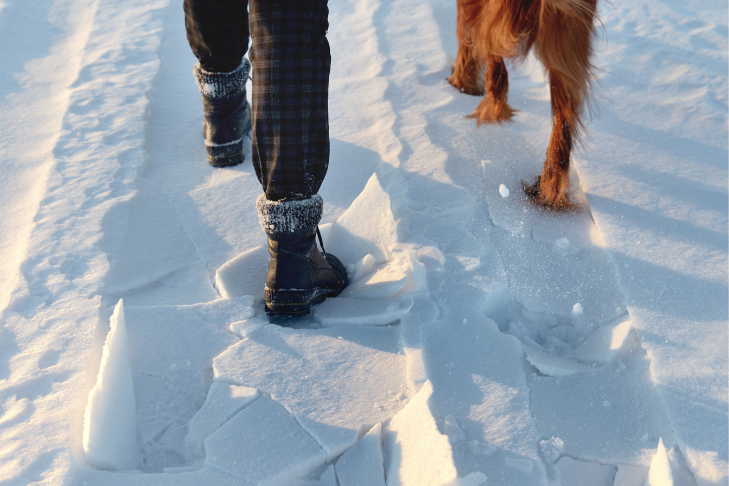How to Navigate Salt and Antifreeze While Walking Your Dog

As pet parents, we absolutely love our walks with our furry friends, whether it’s through the crisp winter air or the breezy vibes of spring. But, with the change of seasons, especially when it gets colder, we see a lot more road salt and antifreeze products being used. We’re here to show you how you can safely avoid these dangers while walking your dog, making sure their paws and health stay safe!
Understanding the Risks of Salt and Antifreeze for Dogs
Road salt, used to melt ice on pathways and roads, can lead to dry, cracked paws or even chemical burns for our four-legged friends. Ingestion, either from licking their paws or from the ground, can result in sodium poisoning. This can be shown through symptoms like vomiting, diarrhea, and seizures.
Antifreeze, with its sweet taste, attracts pets but can be deadly even in small amounts. Ingestion can lead to acute kidney failure and, if not treated immediately, can be fatal. Knowing about these risks is the first step to keeping them safe.
How to Prevent Paw Damage and Poisoning from Winter Chemicals
- Paw Protection: Invest in some quality booties for your dog’s paws. These shield the paw pads from harmful chemicals and reduce the cold’s impact. Make sure they are the right size and fit well to avoid your pup fidgeting or being uncomfortable on walks.
- Moisturize: Just like humans, dogs can suffer from dry skin in the winter. Use pet-safe moisturizers on their paws to help prevent cracking and peeling. Regularly check their paws for signs of irritation or injury and treat them promptly.
- Rinse and Wipe: Make it a habit to wash or wipe down your dog’s paws, legs, and belly after walks This quick step removes any salt or chemical residue, lowering the risk of them getting sick or itchy. (Pro tip: Keep a towel by the door to remind you!)
- Stay on Clean Paths: When possible, stick to paths that are shoveled and clear of salt and chemicals. Grassy areas can also be a safer alternative, but be careful of any hidden dangers that might be beneath the snow.
- Use Pet-Safe Products: If you’re responsible for de-icing your own property and walkways, always go for pet-safe options. These products are formulated to be less harmful to pets and the environment.

What to Do if Your Dog Ingests Antifreeze or Road Salt
If you think your dog has ingested antifreeze or too much road salt, time is of the essence. Some symptoms to look for are excessive thirst, drooling, vomiting, seizures, and lethargy. Contact your veterinarian or an emergency animal hospital immediately if you see any of these signs.
Educating the Community About Pet Winter Hazards
Sharing knowledge about the dangers of salt and antifreeze with fellow pet parents can help protect more pets. Advocate for the use of pet-safe de-icing products in your neighborhood or community to keep local walking areas safe for pets.
Getting outside and walking our dogs is one of the best parts of being a pet parent, and we don’t have to let a little snow spoil the fun. By being proactive and prepared, we can tackle the challenges of salt and antifreeze, making sure our outdoor activities are as safe and fun as possible, no matter the weather!


